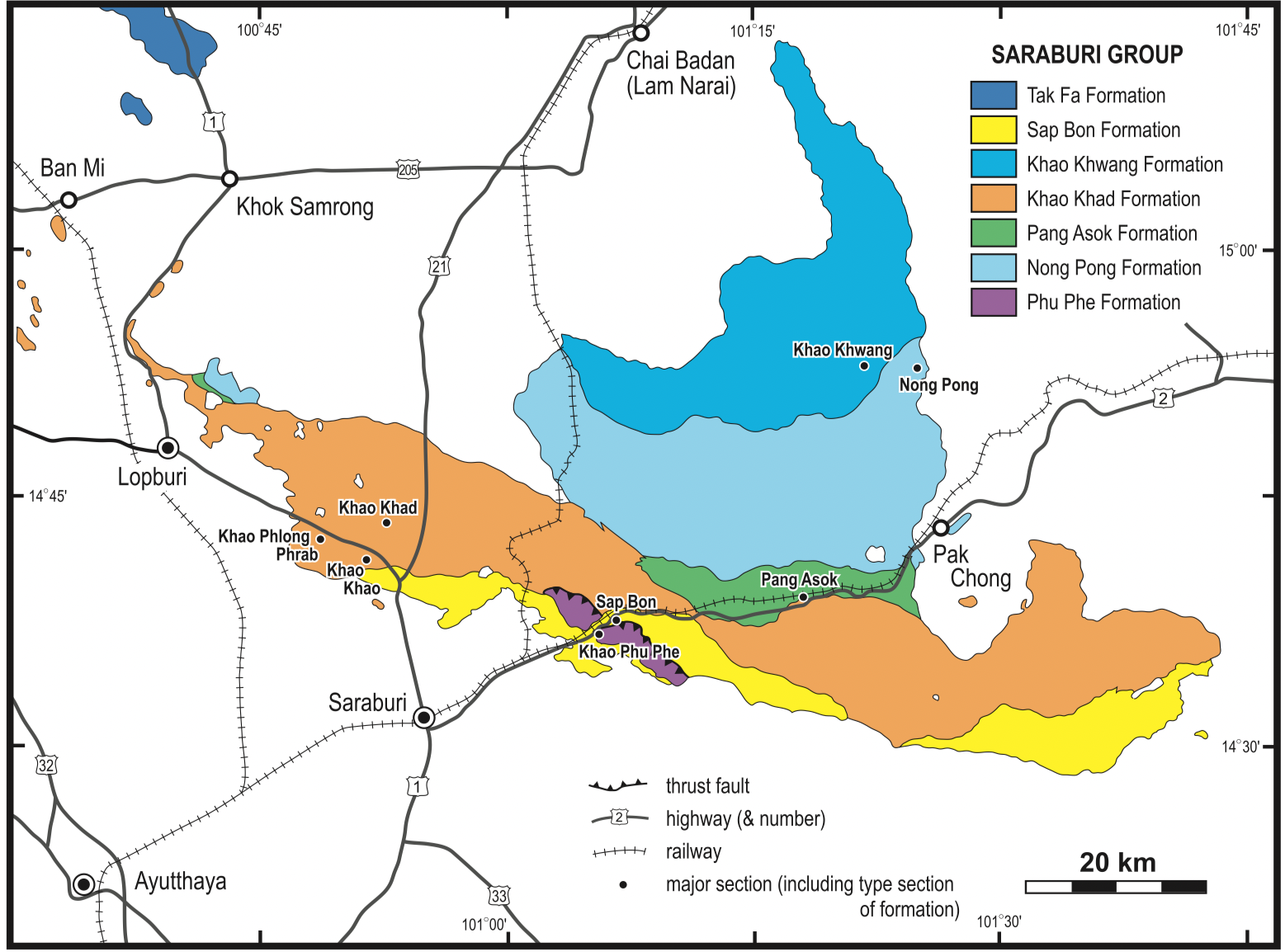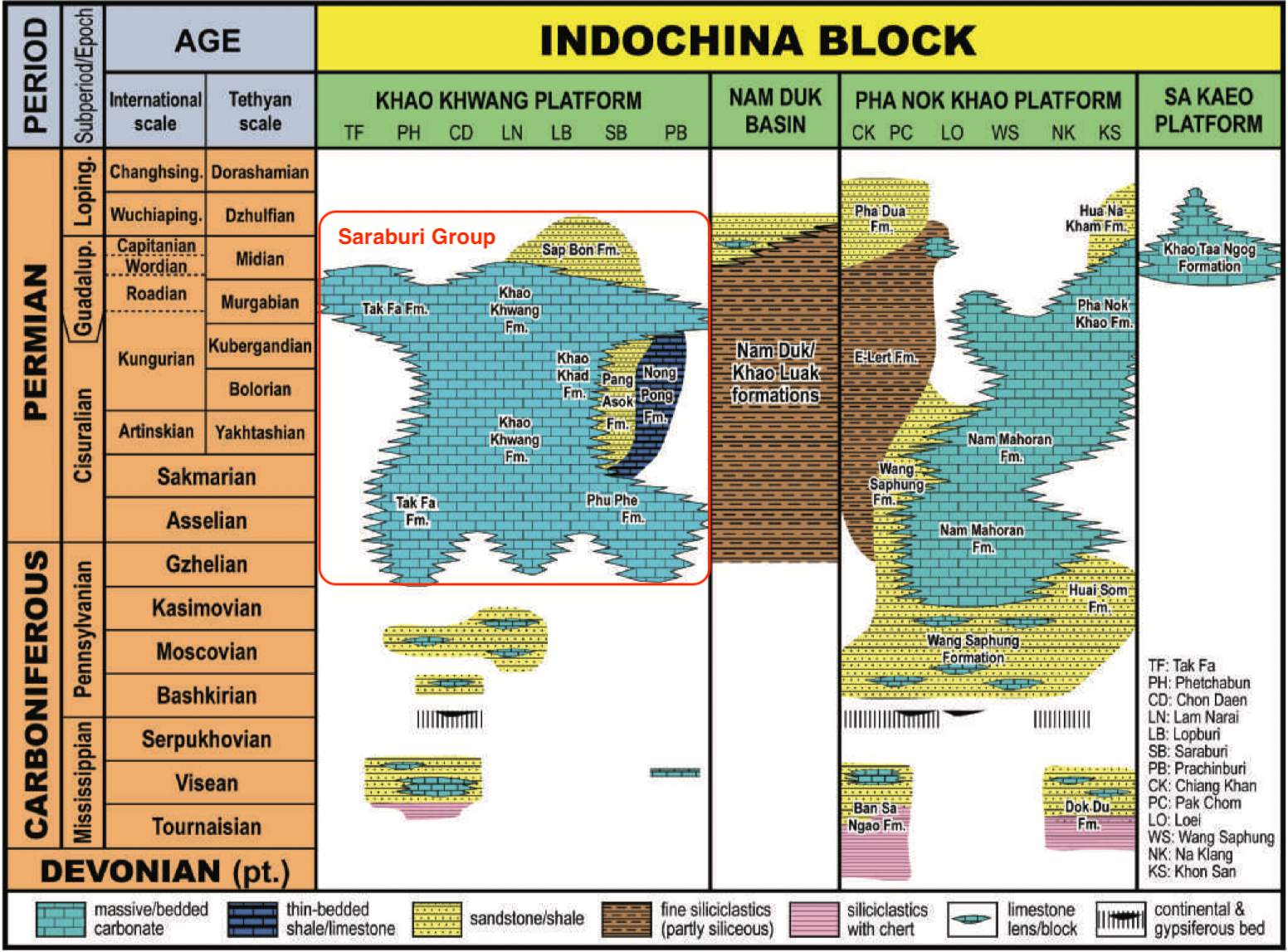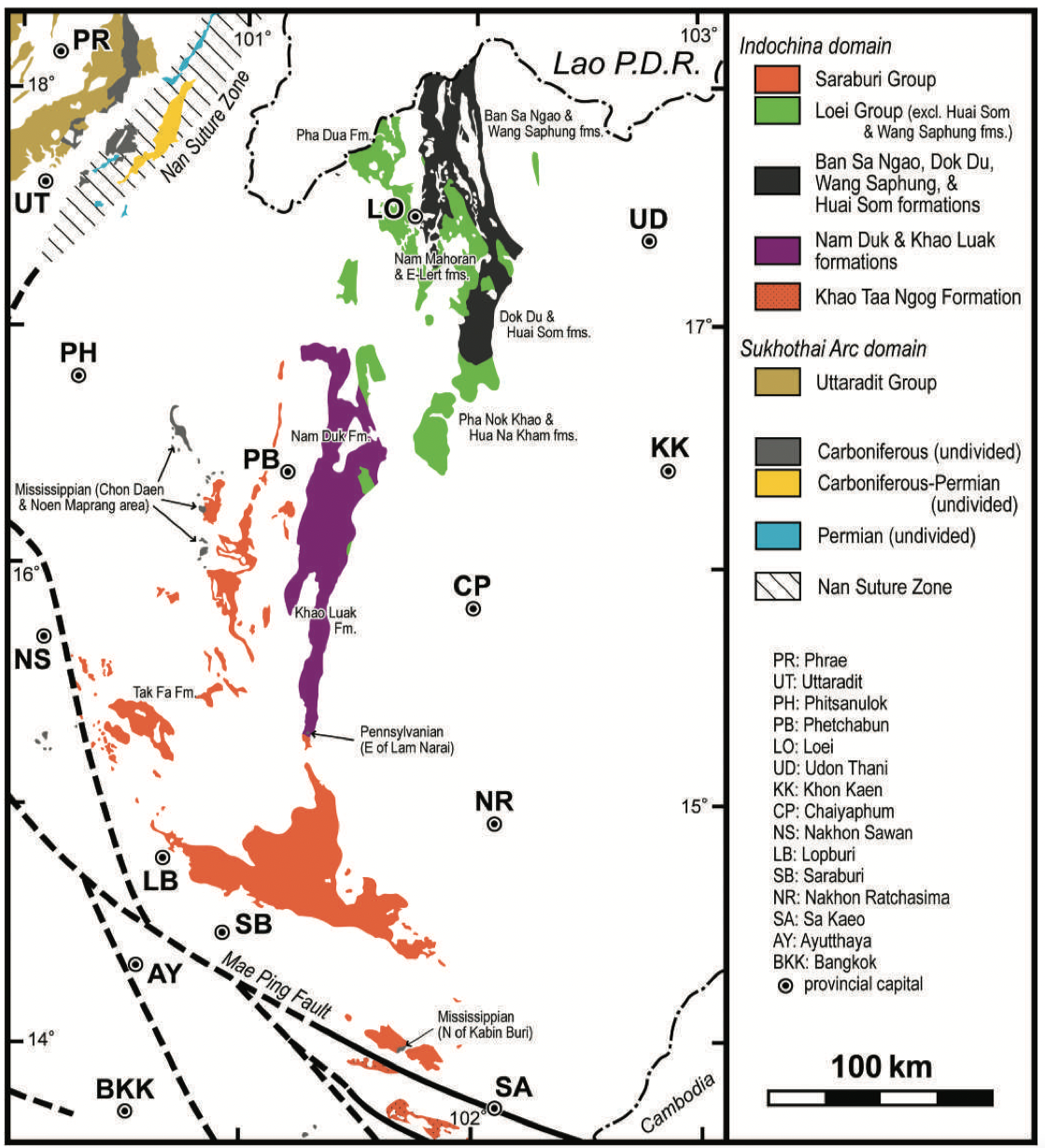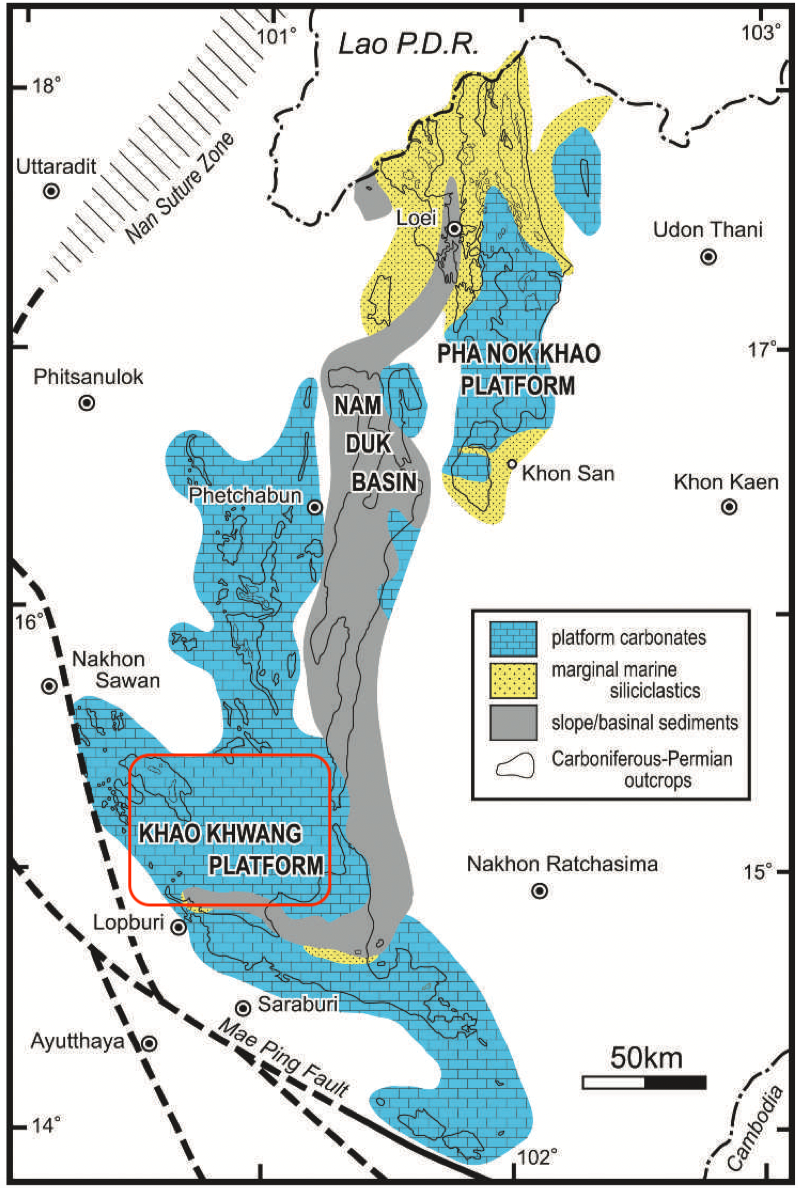Nong Pong Fm
Type Locality and Naming
Khao Kwang Platform (Saraburi region): East of Khao Khwang, grid ref. 560 to 600 E and 440 to 470 N sheet 47P/FG 22, Series L 7017 by Hinthong and others (1985). Parent unit: Saraburi Gr.
[Figure: Geological map of Saraburi Group in Saraburi area, NE Thailand (Ueno and Charoentitirat, 2011).]
Synonym: หมวดหินหนองโป่ง
Lithology and Thickness
[Figure: Carboniferous and Permian facies distribution and resultant stratigraphic subdivisions on the western margin of the Indochina Block, with Saraburi Group highlighted (Ueno and Charoentitirat, 2011).]
Relationships and Distribution
Lower contact
Upper contact
GeoJSON
Fossils
Age
Depositional setting
[Figure: Late Paleozoic major facies subdivisions on the western margin of the Indochina Block by Ueno and Charoentitirat (2011). (Slightly modified from Wielchowsky & Young 1985).]
Additional Information
Remarks: This formation was previously mapped as part of the Ratburi Group (Hinthong and others, 1985).
Pendexter (1980) studied the sedimentary facies and depositional environment and suggested that it was deposited in a basinal setting. The available sedimentological and age data suggest that it could be the basinal time-equivalent of the Phu Phe, Khao Khad and Khao Khwang shallow-marine platform-facies formations. This slightly deeper area of the Khao Khwang Platform may be the continuation of the Nam Duk Basin (Ueno and Charoentitirat, 2011).



